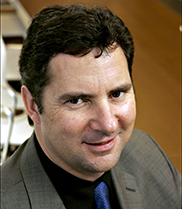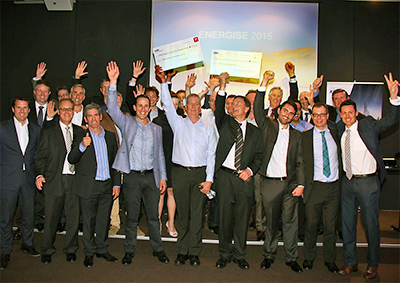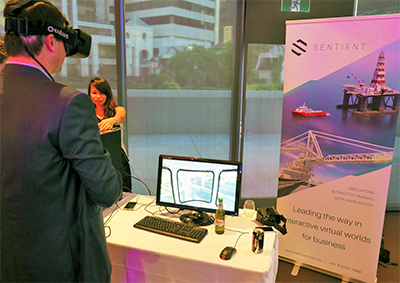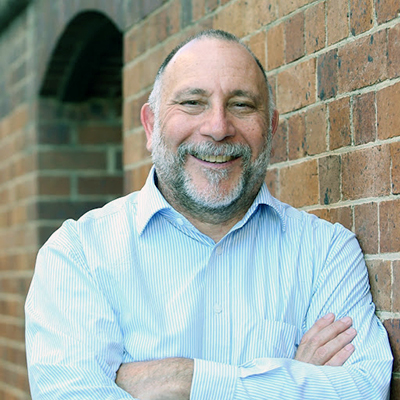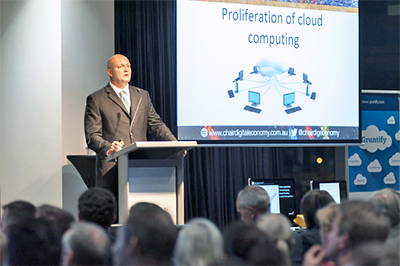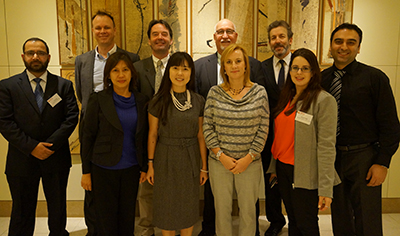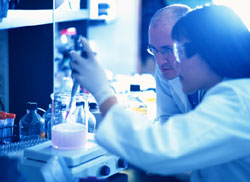MUCH is being made of the opportunities around the so-called Internet of Things (IoT) but the recent Innovation Series event in Brisbane heard that business leaders are going to have to cope with downside Things as well as upside Things.
One thing is certain – and keynote speakers Knowledge Economy Institute CEO Michael Briers and CQR Consulting co-founder Phil Kernick agreed – Things are never going to be the same again. 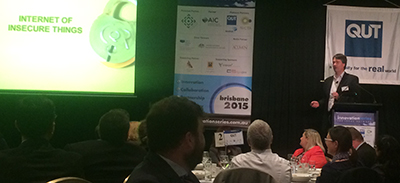
On the opportunity side, Dr Briers said business leaders who understood the possibilities would be able to find new efficiencies, use more data to make better decisions and get into new areas of business that have not existed in the past.
“The notion of rendering the invisible visible is totally transforming the knowledge economy,” Dr Briers said. “The knowledge economy is now, right here. It is creating a whole new world of opportunities in creating value.”
“IoT is really about lighting up dark assets,” he said, “in ways that we have never imagined before. The future is now – it’s just unevenly distributed.”
Mr Kernick agreed the future was unevenly distributed and warned: “Here’s my definition of the internet of things: it’s all the technology you didn’t realise you were buying and connected in ways you don’t understand and doing things the manufacturer tells you that you don’t need to worry about …”
He said the evolution of IoT was inevitable as were the mistakes and anomalies that would befuddle business specifically and the population in general.
But Mr Kernick’s company – which is essentially a professional hacking and ICT security organisation – knows very well the dangers of smart objects and systems that can be ‘taken over’ by hackers.
“I run a hacking company. It is going to be great for us,” he said, as manufacturers ask CQR Consulting to hack-proof their devices. However, he is concerned about all the companies who do not secure cheap IoT products.
“We are going to do really well out of IoT,” he said.
THE UPSIDE THING
Dr Briers’ organisation, the Knowledge Economy Institute, is a great case example of how the starting point for a business in the evolving digital economy is often colossally different from where it ends up.
Knowledge Economy Institute (KEi) – led by Sirca and involving technology giants Cisco and Bosch along with a phalanx of Australian universities – evolved out of an organisation that wanted to make life easier for researchers and academics by organising data for them.
The logical basis for this business was that highly-paid professors and researchers should not be wasting their time on organising data in order to formulate reports and journal articles, but should spend more time thinking and evaluating what that data means. This should have produced better outcomes for academics – and it did – but then something came out of left field that would go on to transform the world’s financial markets.
“We founded a company in the late 1990s (Sirca) which wanted to collect data and make it easier for researchers to do research,” Dr Briers said. The goal was to get a PhD student through their qualification within the three year period.
“What we had found was that PhD students were spending 80-90 percent of their time wrangling the data trying to get it all together before they could do any useful analytics on that data. By the way, that still holds true now – in businesses … everywhere.
“We see businesses still hiring data scientists – they are highly paid – and they are still spending most of their time wrangling that data before they can do anything with it.”
Dr Briers helped create the not-for-profit company, Sirca, with a group of participating foundation universities and set out to render data and make it available for analytics.
They struck a key deal with Thomson Reuters to utilise their data – all the world’s financial exchange data, as it turned out – for academic purposes. Today, Sirca captures 2 million financial records per second.
“Every single exchange in the world, every single transaction. It is the biggest database of its type in the world,” Dr Briers said. “But we set out initially just with that academic purpose … to make academics more productive.”
Thomson Reuters gave Sirca all their data on computer tapes for free, from London, as long as it was used for academic purposes – “and we built the largest system of its type in the world for historical data,” Dr Briers said.
“We stated to see academics become more productive. Thousands of research papers have been written out of this. But it wasn’t until the early 2000s, and with the rise of algo (algorithm) trading, that Thomson Reuters asked what we were doing with their data. So I took it to them and showed them what we were doing.
“They said, as you were sending the tapes back, we were deleting them … so we (Sirca) actually became the only source of this data globally, because academics wanted it – they loved that historical stitched together data.
“So the point here is that a new use case emerged – and that was algo trading.
“This was banks taking astro-physicists, putting them into a vault and paying them five times what they earned in academia and doing algorithms to beat the market – and to do that they needed historical data.
“So what we are quite proud of is that we have the same platform for the academic sector, delivering papers and research, and for the financial markets to make money, and also to the regulators who use the same data, same technology to keep them (the markets) honest. To monitor the market – insider trading and so on.
“It is what we call the triple helix of research, business and government use.”
WATCH THE DOWNSIDE OF THINGS
Upside outcomes like that of Sirca do not surprise QCR Consulting’s Mr Kernick – but technology journeys can also “head south” and that is where he urges business leaders to be cautious.
As businesses increasingly rely on the internet to monitor their machines and operations, the risks of hacks, outages and unintended consequences arise.
“We haven’t even started to imagine the things that IoT is going to cover,” Mr Kernick said.
“We can sort of understand it now, it’s kind of today’s tech and a little bit. But IoT is going to move so much further than that.
“Your home security system, your phone, your car, your car audio system – these are all little computers,” Mr Kernick said. “Every single one of them is connected in some way. In fact, everything that you have ever had the opportunity to update the firmware on is a smart thing. And there are dozens and dozens of them in your house today. You don’t know you are buying them. Your aim is to buy a functional thing – you don’t know it’s a PC in a different shaped box.”
He gave as an example the new electricity network approach in Victoria, where most home owners were happy to adopt smart meters as a way of reducing their power bills.
“We did the security testing,” Mr Kernick said. “Personally I’d have a smart power meter in my house, but people don’t realise that when you sign up for these things you also give permission for (an) authority to turn off your air conditioner – remotely – when the need arises.
“(The authority says) we can turn off anything that you plug in – remotely – because we are not managing your house, we are managing the ecosystem.
“We don’t want to black a suburb out, so we are just going to turn off a few people’s air conditioners… and hope it’s not 88-year-old Mrs Jones.”
The sort of IoT future Mr Kernick sees could have ramifications in all areas – even down to connected office furniture playing a role in workplace health and safety and employee wellness.
“We’ll get there. I have no doubt about that, but everything that we interact with will be smart – including your plate,” he said at the Innovation Series luncheon. “Which will know what’s on it and will suggest that maybe you don’t need that second bread roll. I know the person next to you didn’t eat it, but you probably don’t need it. And it will beep on your little smart watch and say, uh-ah – put it back!”
And there may be some unanticipated workplace relations consequences.
“Your furniture will weigh you,” Mr Kernick said. “When you sit down in (your) chair it will say, wow, gone up a bit. Perhaps get back up again …”
He said everyday devices that become medical monitors are almost here, and “every single medical device becomes connected”.
“What about your connected toothbrush? Mouth swabs are a good indicator of general health. So it’s likely your toothbrush will become a smart medical sensor …
“Are you looking forward to the connected toilet?” he asked. “Dead set. Happens in Japan today. It senses your wee and, if necessary, alerts you to medical conditions.” While that may be useful:
“When that data is available to your insurer, on the other hand, that is going to make your life slightly harder.” Not to mention complications if that information is made available to employers.
“So there’s the slightly scary, but now here’s the engineering reality: Somebody’s got to pay for this. This isn’t free. I love our academics who say, just connect it all, like, it’s magic.
“It’s not magic. It’s science. It’s engineering and it’s done badly.”
www.innovationseries.com.au
Innovation Series events, created and operated by Zernike Australia and supported by Business Acumen magazine since 2004, are a rare opportunity for business leaders, government leaders, researchers, educators and entrepreneurs to get together and hear from Australians at the cutting edge. The Innovation Series events are an opportunity for frank discussion on the issues that face Australia and to hear how collaboration and innovation can steer the country forward.
ends
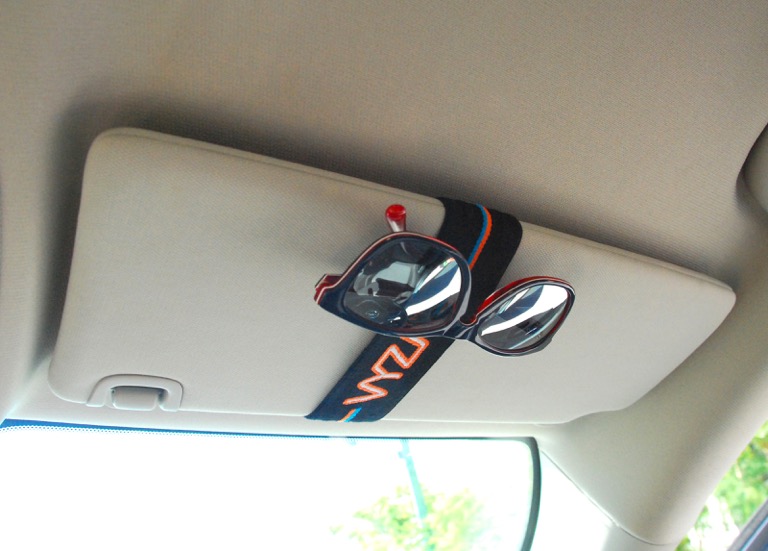

 How to resolve AdBlock issue?
How to resolve AdBlock issue? 